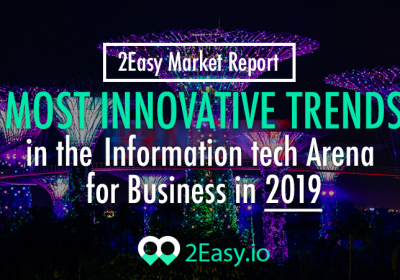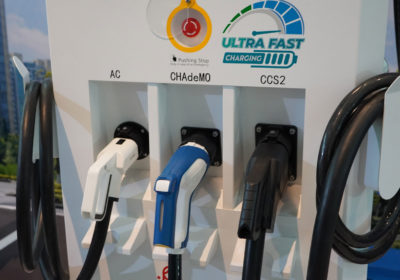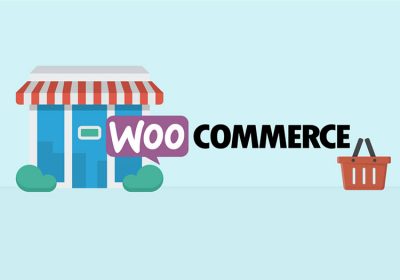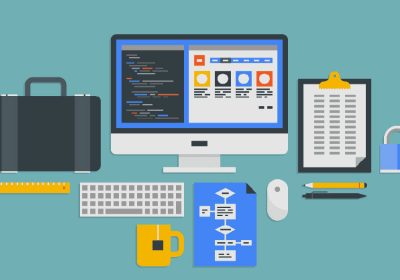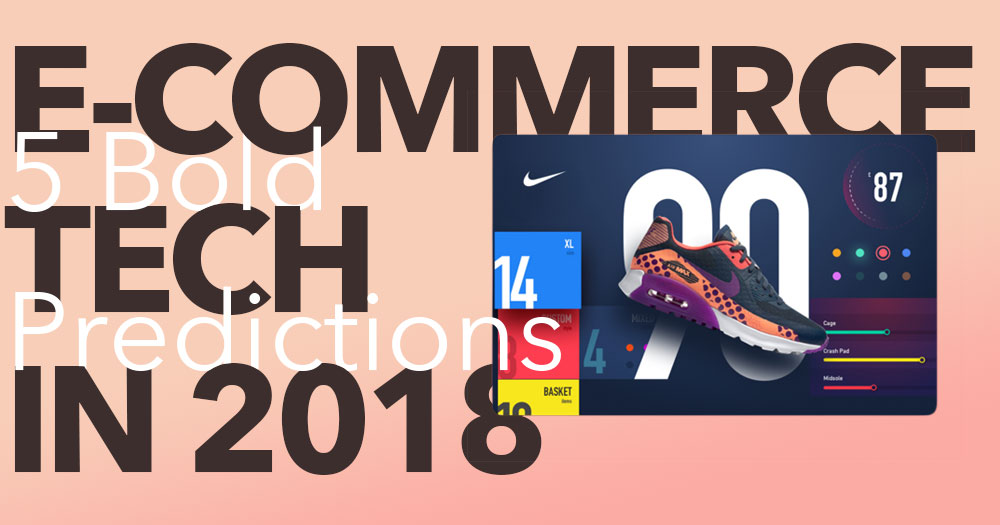
- Stats: 4104 1 0
- Author: admin
- Posted: January 28, 2018
- Category: E-commerce, Entrepreneur Inspiration, Technology News, Website Design & App Development
E-Commerce Tech in 2018: 5 Bold Predictions
E-Commerce Tech in 2018: 5 Bold Predictions
Fifteen years ago, most major retailers biggest concern about E-commerce was largely hypothetical. With the emergence of a small online bookshop, the idea that online stores could someday lead the world of retail was daunting but not at the time, seemingly imminent.
Even ten years ago, the threat that currently drives 60% of online retail shopping didn’t exist. Five years ago, the concept of personalization was simply a promising experiment being tested by a limited few. And now brick and mortar shops find themselves facing what has been coined the “retail apocalypse”, something they didn’t see coming.
E-commerce technology is growing at a rapid pace, so predictions about what 2018 will hold may seem futile. In an industry that has been constantly surprising, how do we know what could be next? Still, here are some bold thoughts on what I think you will see come to fruition this year:
-
E-commerce tech will Return to a Customer-Centric Experience
E-commerce has moved beyond fancy websites with enticing banners and buttons. As the industry grows, competition becomes fiercer, thus, focus is shifting to gain loyal consumers by optimizing the entire customer experience. As the technology improves the digital experience becomes smooth and new innovations are being created that apply to every aspect of the industry from basic supply chain management to augmented reality apps. People around the globe are striving for your attention and they are doing this by making the user experience more exciting and enjoyable.
-
Artificial Intelligence (AI) Will Start Having a Real Impact
Better known as “AI” artificial intelligence is the new buzzword. 2017 has already abused and overused the words use leaving the sense that it’s all about hype with no follow through. But there is still room for AI within the sphere of e-commerce tech. The technology is capable; the issue is with access to the data needed to help machines learn. In order for AI to work, the machines need the opportunity to have enough data to develop algorithms, this is a challenge for e-commerce tech because many online shops, even the more established tech savvy ones exist across a multitude of software programs and basement servers. This makes unified profiles for the customer incredibly challenging.
But although AI will start making a difference in the field, it won’t be with a lot of pomp or circumstance. The kinds of AI retail problems that need solving do not lend to excitement. Practical applications to solving problems will be found in 2018 which may not make the news, but will benefit brands that jump at the opportunity to incorporate the technology.
-
Retail’s Middle Class Will Struggle
The pattern has already begun and will continue to worsen for 2018; retailers and department stores that cater largely to middle class consumers will struggle. People like to think that the world of online shopping is a level playing ground, that a small middle class company can compete with Amazon and be successful…but they forget one thing, those smaller companies that are successfully competing with Amazon, are not selling products for the average citizen. They are selling very expensive, luxury goods.
On the other end of the spectrum is discount retailers. Places like Dollar Tree for example, have no problem competing with mammoth retailers like Amazon because their prices are unbeatable. And this is seeping into the online market. An LA company called “Hollar” has successfully brought the dollar store experience to life online, pairing low prices with the digital experience. Hollar will likely become a household name in 2018 as a major contributor in the e-commerce tech game.
-
Acquisitions Will Bring Amazon Into the World of Fashion
Despite their success, Amazon has yet to really break into the niche fashion market. But expect that to change. Jeff Bezos has done it before, and he does it by simply buying out his competitors.
NYU Professor and Amazon expert Scott Galloway predicts that in 2018 Nordstrom will join Amazon to fill a significant void in their fashion market. Gene Munster has an even braver prediction; that Amazon will buy out Target for $40 billion. As proven by their previous acquisition of Whole Foods, Amazon has a pattern of making big moves to enter new markets. But in this case, I expect Amazon to seek out slightly smaller stores that have high margins, wealthy clientele and well-known brick and mortar brands. By finding a retailer with revenue under $1 billion, Amazon can avoid the annoyance of antitrust issues.
For these reasons I predict that Amazon will make a bid for Patagonia. It satisfies the need to have a brand loved by socialite millennials while lowering financial cover.
-
The Appeal of Logos and Big Brands Will Fade
As Amazon’s popularity increases it is becoming more and more apparent that the label is not longer priority for most shoppers. People are perfectly content with nice looking basics that have a similar style to a big name item but without the hefty price tag. When picking out a polo, that little Lacoste crocodile is no longer worth an extra $60. This is proven by the fact that one of the e-commerce success stories is a shop literally called “Brandless.” In 2018 expect the popularity of generic brands to increase, putting pressure on many expensive labels to gain customer loyalty with a better customer experience instead of standing on their logo alone.
At 2Easy, you can find the quality companies to build your professional corporate level online store.



